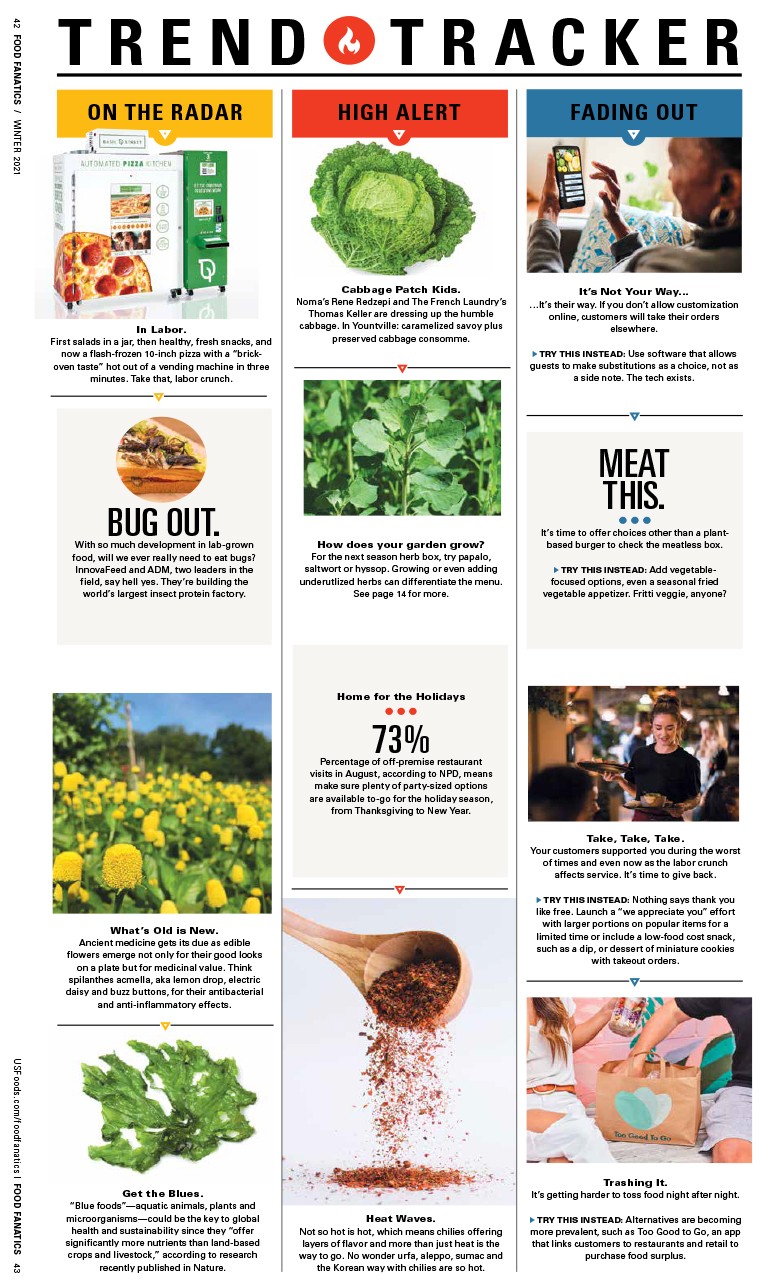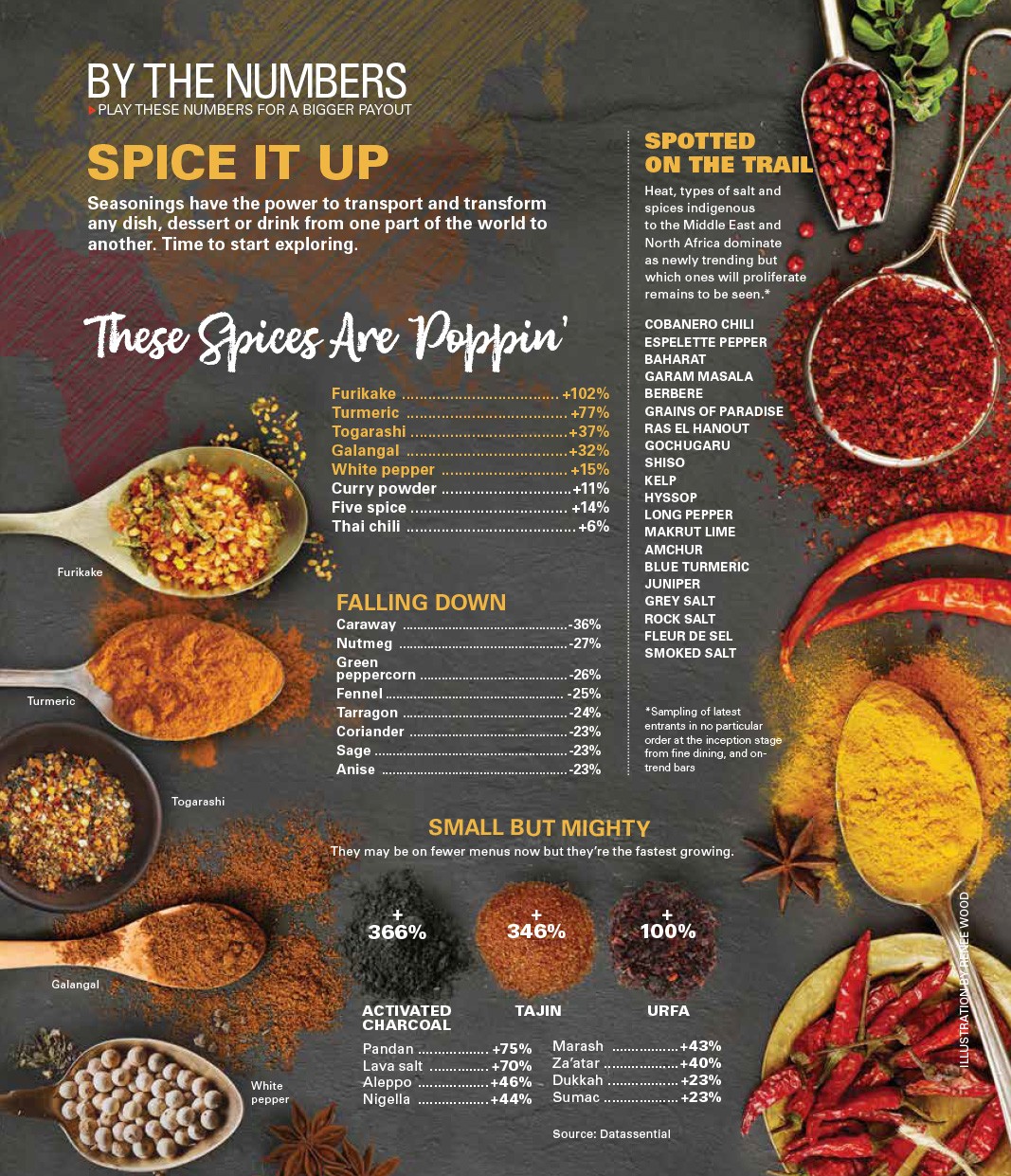Gin For The Win
The original flavored spirit paves the way for focused beverage programs
“Mad Men” may have sparked our love affair with classic whiskey cocktails. Credit Don Draper, an old fashioned enthusiast, who helped catapult that cocktail onto bar menus everywhere. But recently, cocktails seem to be lightening up to a more subtle spirit: gin.
“There’s been a real resurging interest in gin over the past few years,” says Martin Cate, owner of San Francisco’s gin-centric cocktail bar Whitechapel. “There’s been an explosion in varieties, styles and brands. Not just a lot of new gins on the market, but really different ones—some even pushing the definition of gin.”
Cate, who also owns the successful rum bar Smuggler’s Cove, opened Whitechapel a year ago with 400 bottles of the stuff after all signs pointed to gin as the next big thing. Gin has jumped from 16.5 percent to 26.5 percent over the past four years on restaurant menus, according to a MenuTrends report from foodservice research firm Datassential.
Picking your poison from a well-stocked bar is only part of the equation; you have to know how to use it.
Reinventing a Classic
Today’s customer is more discerning about gin—and the cocktail it’s in. Gone are the days of watery gin and tonics made with compound gins, overly sweetened tonics, bad ice and old, brown limes. In 2013, Chicago’s Sable Kitchen & Bar launched a Spanish “gin tonic” program inspired by the world’s leading consumer of the spirit. The bar menu features a handful of small-batch gins and craft tonics served in a giant bowl glass, finished with garnishes such as celery bitters and rosemary or orange peel and Thai chili.
"I use the line, 'Gin is like sex: If you don't like it, you're doing it wrong.'"
-Mike Ryan of Sable Kitchen & Bar
“Our expanded gin offerings are meant to provide a gateway to gin in an accessible and novel way,” head bartender Mike Ryan says. “The Spanish-style gin tonics use a slightly higher ratio of tonic to gin, along with specific pairings of gins, tonics and garnishes to accentuate different elements.”
New York’s Oceana launched the Just Gin program in 2012 to showcase classic gin cocktails, drawing from nearly 50 types that cater to different tastes and budgets. “You basically pay for the gin, and that’s the price of the drink,” says beverage director Pedro Goncalves. A martini made with Beefeater costs $10; the same martini made with Germany’s coveted small-batch Monkey 47 costs $26.
Gin is served with a choice of four housemade tonic waters—bitter, sweet, citrus or spicy. “And if you still want Schweppes,” says Goncalves, “there’s a dollar upcharge.” It’s his way of encouraging customers to experience tonic water that tastes like its primary ingredient: cinchona bark.
Negronis Are the New Black
The Last Word, the Aviation and the Bee’s Knees are all gin drinks in heavy rotation at Oceana. But the negroni—equal parts gin, Campari and sweet vermouth—is a century-old classic that’s ensuring gin cocktails find a place on menus.
“It’s a good cocktail for people who don’t like gin on its own, because it’s equal parts of other ingredients as well,” says Goncalves.
It’s versatile, too. It could be as simple as adding flamed orange to a classic negroni, like Roosevelt in Denver. San Francisco restaurant Dirty Habit batches its negronis and barrel ages them in 1512 Spirits rye casks for three months. A negroni slushy might sound seasonal, but it is so popular that it has become a menu fixture at Parson’s Chicken & Fish in Chicago.
Vodka, the Gateway Spirit
What about drinkers who dislike gin? Owner Brady Caverly, whose Los Angeles bar, the Flintridge Proper, boasts more than 200 bottles of gin, says it’s all about perception of flavor.
“I like to think of gin as the original flavored vodka,” Caverly says. Persuade a guest to give a juniper-flavored vodka a chance, he says, and they’ll see gin in a different light.
Brett Hughes, head bartender at New York’s Madam Geneva, which opened in 2008 as one of the country’s first gin-centric lounges, embraces the challenge of anti-gin consumers. “As long as you make them comfortable, they won’t freak out,” he says. “Make something that’s a typical vodka cocktail made with gin, then ask, ‘Do you like it?’ Sometimes, they won’t even know the difference.”
Stocking a wide variety of gins means guests feel in control of their choices, says Goncalves. He suggests recommending gins based on a customer’s go-to spirit of choice. “I love the idea that you can give somebody a taste of something and introduce them to something new,” he says. “You can’t convince everybody at once, but it’s one vodka drinker at a time.”
Lauren Viera is a Chicago-based spirits and cocktails writer whose first love is gin.



